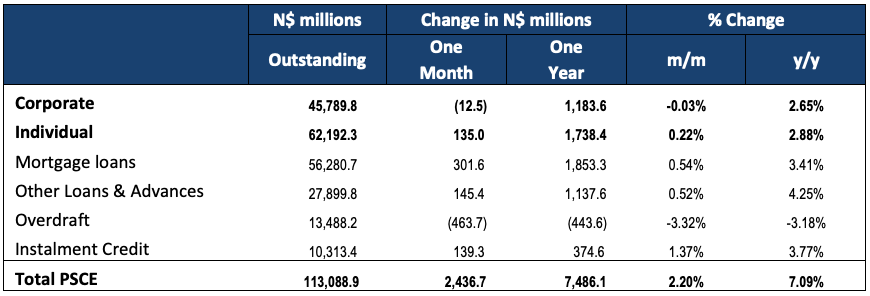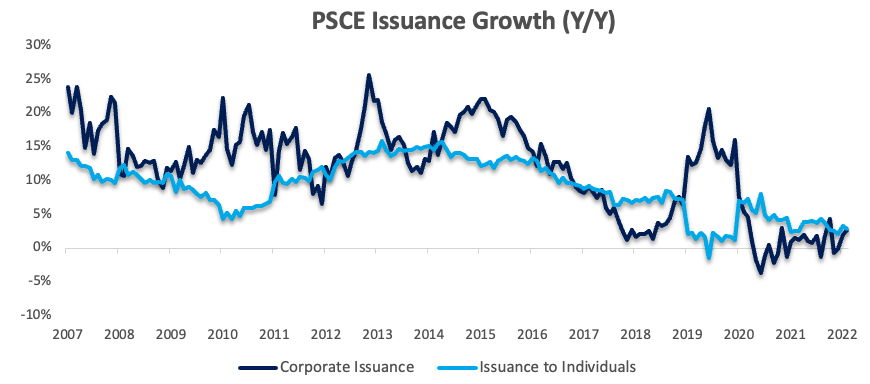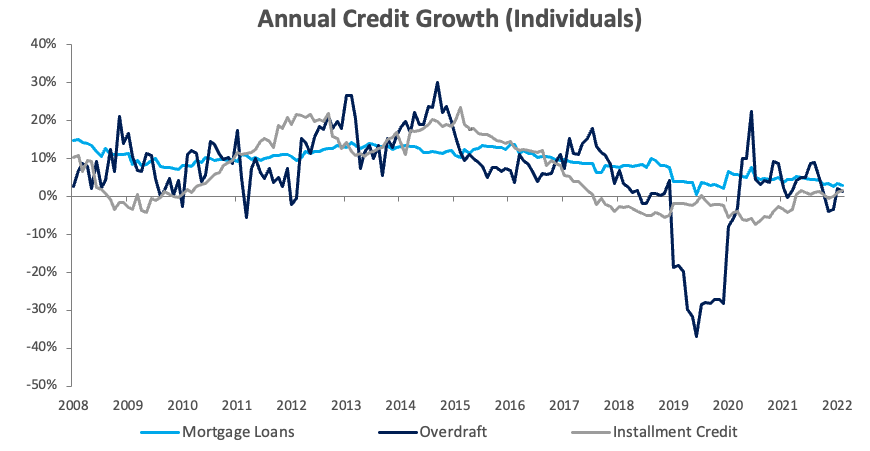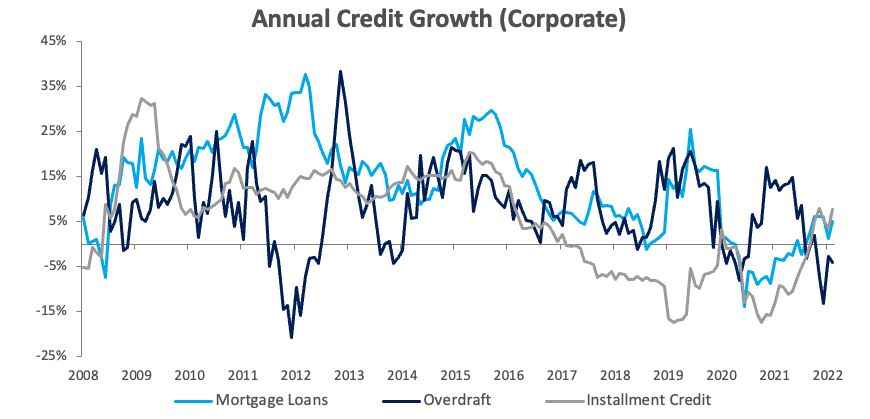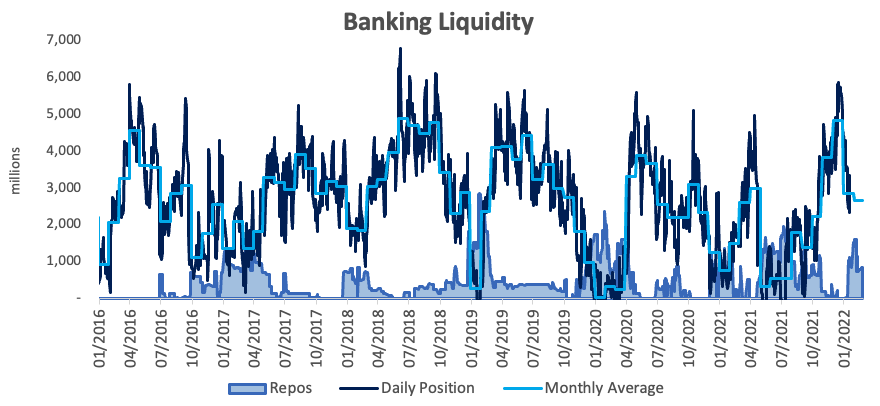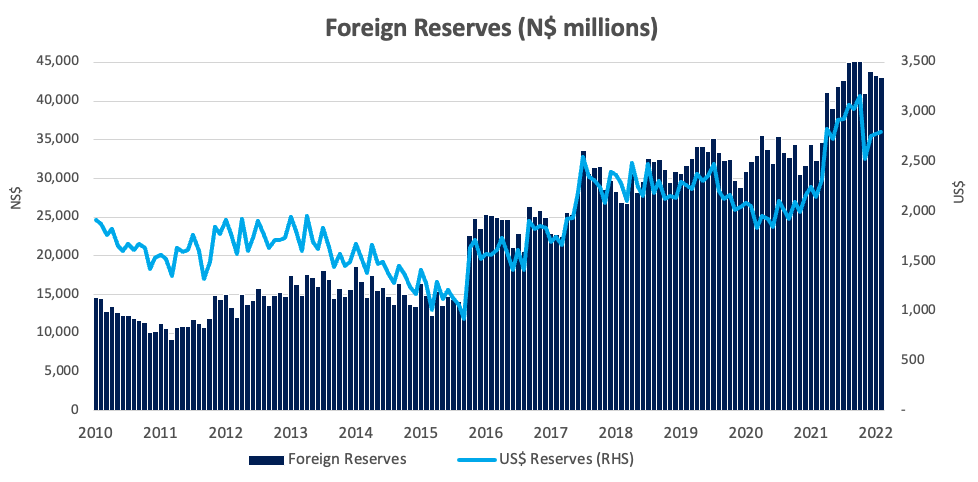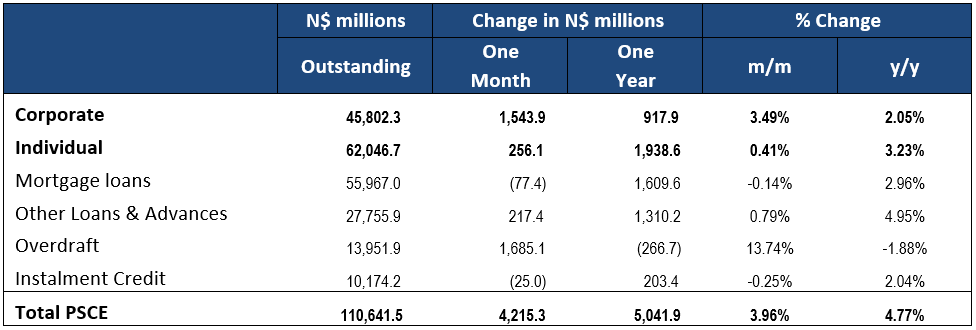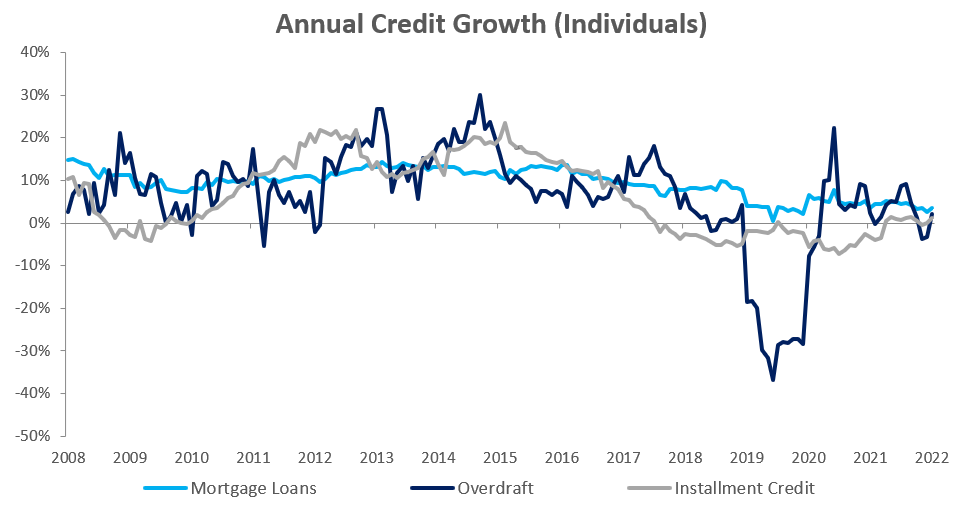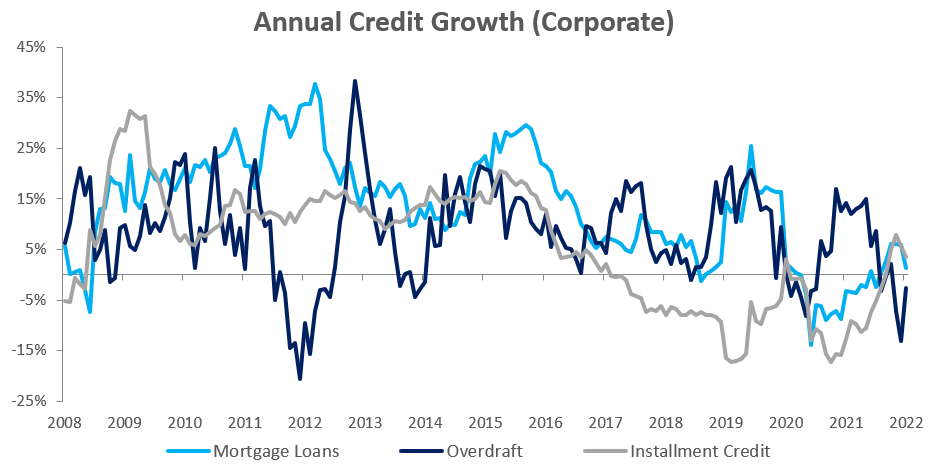
Private sector credit (PSCE) rose by N$1.35 billion or 1.2% m/m in March, bringing the cumulative credit outstanding to N$114.4 billion. On a year-on-years basis, private sector credit grew by 8.7% y/y, compared to the 7.1% y/y growth recorded in February. The growth was however again largely driven by a substantial increase in claims on non-resident private sectors. Normalising for this sees March PSCE growth at -0.9% m/m and 1.7% y/y. On a 12-month cumulative basis N$9.17 billion worth of credit was extended to the private sector. N$1.40 billion worth of credit has been extended to individuals on a 12-month cumulative basis, while corporates took up N$835 million. The non-resident private sector increased their borrowings by N$6.94 billion.

Credit Extension to Individuals
Credit extended to individuals fell by 0.2% m/m, but rose 2.3% y/y in March. On a monthly basis, only the instalment credit subcategory posted growth, increasing marginally by 0.2% m/m and 1.5% y/y. Mortgage loans to individuals contracted by 0.2% m/m but rose 2.2% y/y, while overdraft facilities fell by 1.3% m/m and 1.0% y/y. Other loans and advances (consisting of credit card debt, personal- and term loans) declined by 0.2% m/m, but rose 4.0% y/y.

Credit Extension to Corporates
Credit demand by corporates remained subdued, with credit extended to corporates declining by 1.8% m/m. On a year-on-year basis, credit extended to corporates slowed to 1.9% y/y. Mortgage loans increased by 1.3% m/m and 6.6% y/y. Instalment credit by corporates rose by 2.0% m/m and 11.2% y/y, although the growth rate is from a low base. Overdraft facilities to corporates continued to fall, declining by 4.3% m/m, although still posted a year-on-year growth of 1.3% y/y. The Bank of Namibia (BoN) ascribed the monthly decline to repayments by businesses operating in the energy, fishing and health services sectors.

Banking Sector Liquidity
The overall liquidity position of the commercial banks deteriorated during March, falling by N$104.5 million to an average of N$2.57 billion. The BoN noted that the rise is customary during March as government offices winds up expenditure before the close of the fiscal year, coupled with an increase of some investment proceeds. The repo balance rose to N$936.8 million at the end of the month after ending February at N$862.6 million.

Reserves and Money Supply
As per the BoN’s latest money statistics release, broad money supply (M2) N$1.73 billion or 1.4% y/y to N$129.1 billion. Foreign reserve balances fell by 5.3% m/m or N$2.27 billion to N$40.8 billion. The decline was ascribed to foreign government payments coupled with net commercial bank outflows due to an increase in the import bill.

Outlook
While PSCE growth appeared strong again in March, the increase was again primarily driven by a large increase in claims on non-resident private sectors. The BoN had previously attributed these substantial increases to a loan uptake by one of the commercial banks from its parent company in South Africa. Normalising for this large increase sees PSCE remaining subdued at 1.7% y/y in March, down from a normalised increase of 2.6% y/y in February.
Corporate credit demand remains particularly low, with only two of the last six months recording increases on a month-on-month basis. A lack of corporate credit appetite indicates low business confidence and that businesses are not taking up credit to expand their operations.
As expected, the BoN hiked the repo rate by 25bps at its April MPC meeting. Our expectation remains that we will see 3-4 additional 25 bp hikes throughout the rest of the year.

